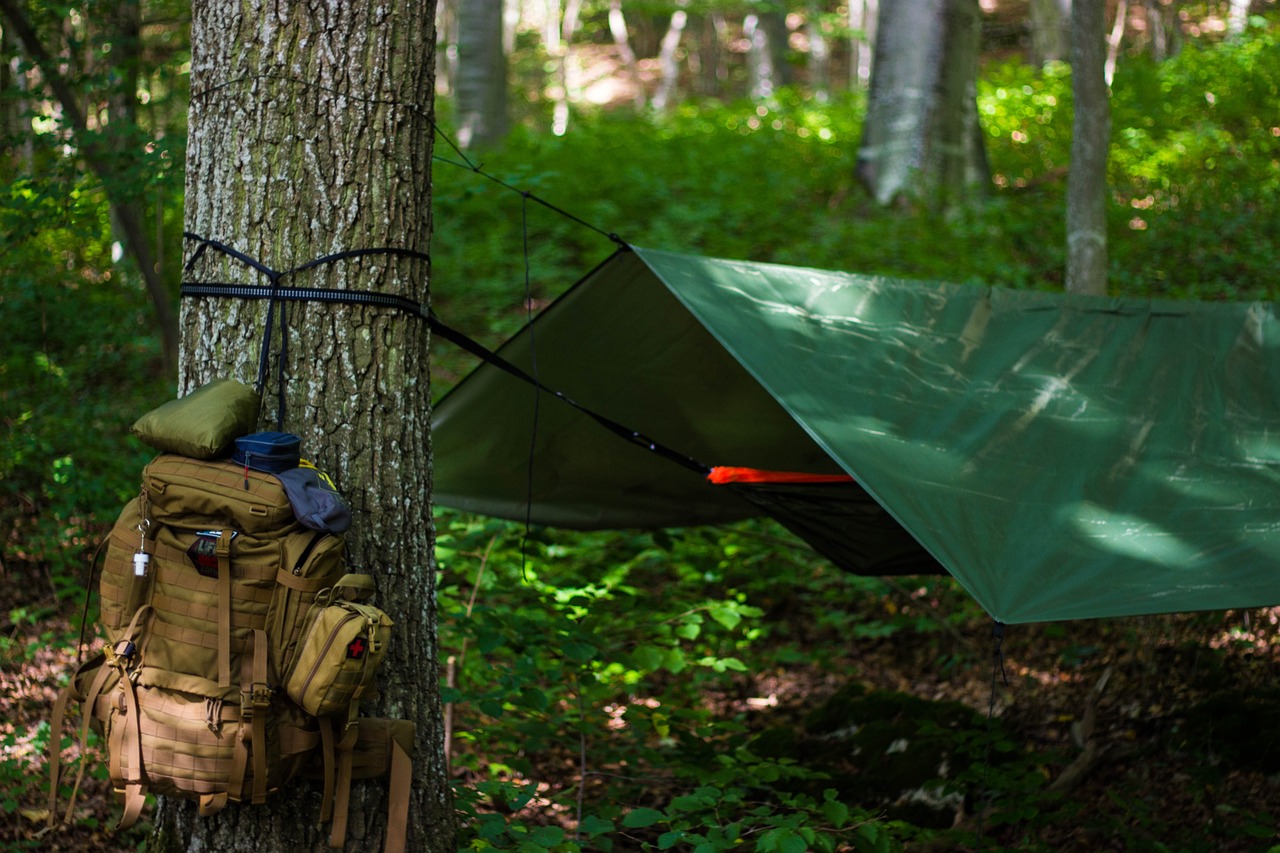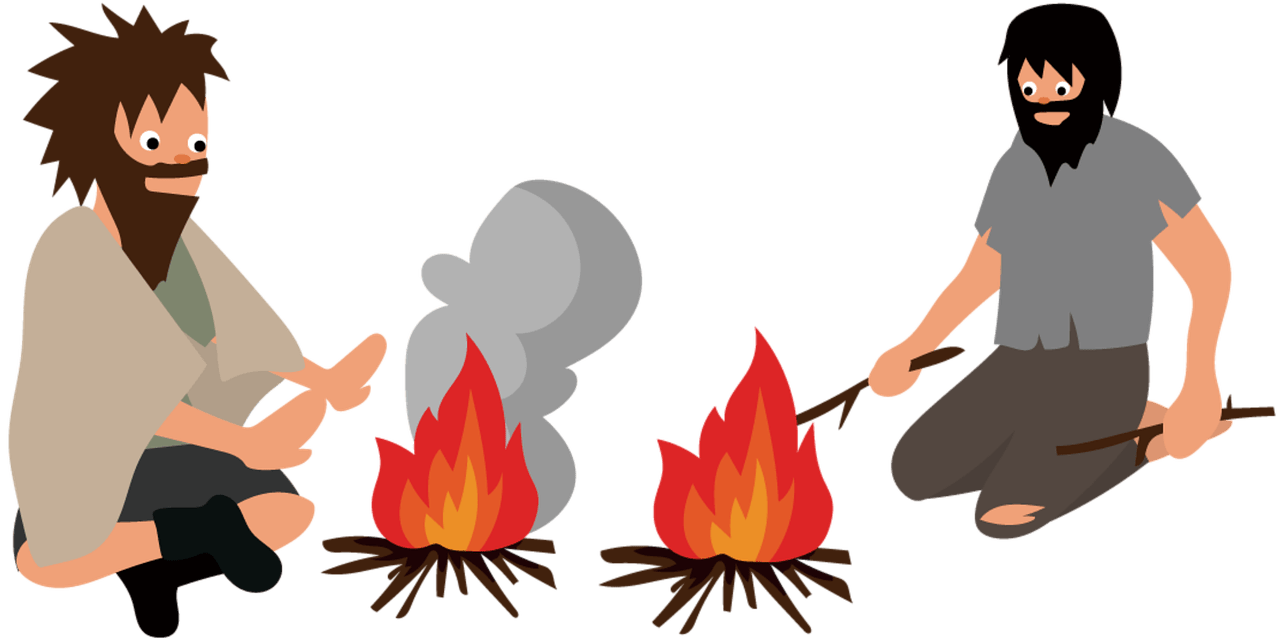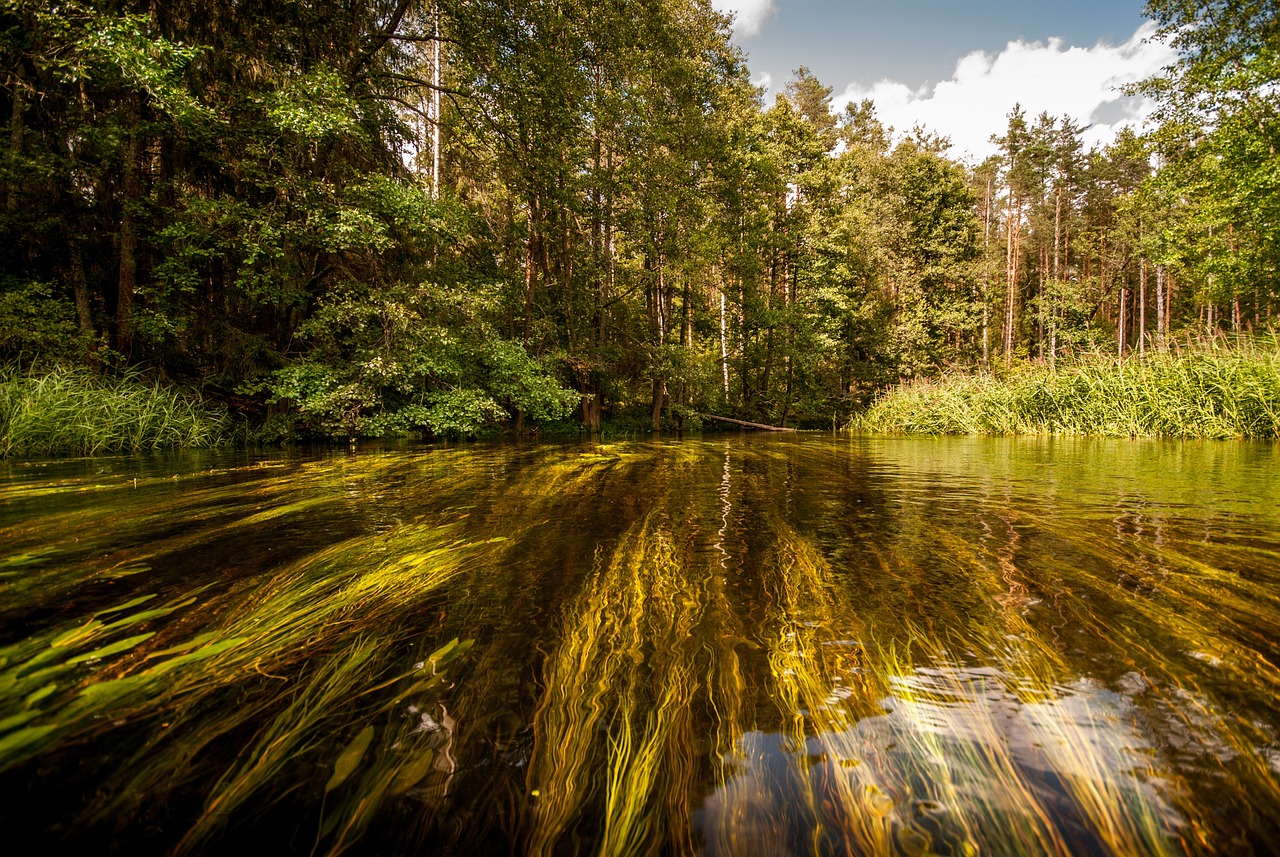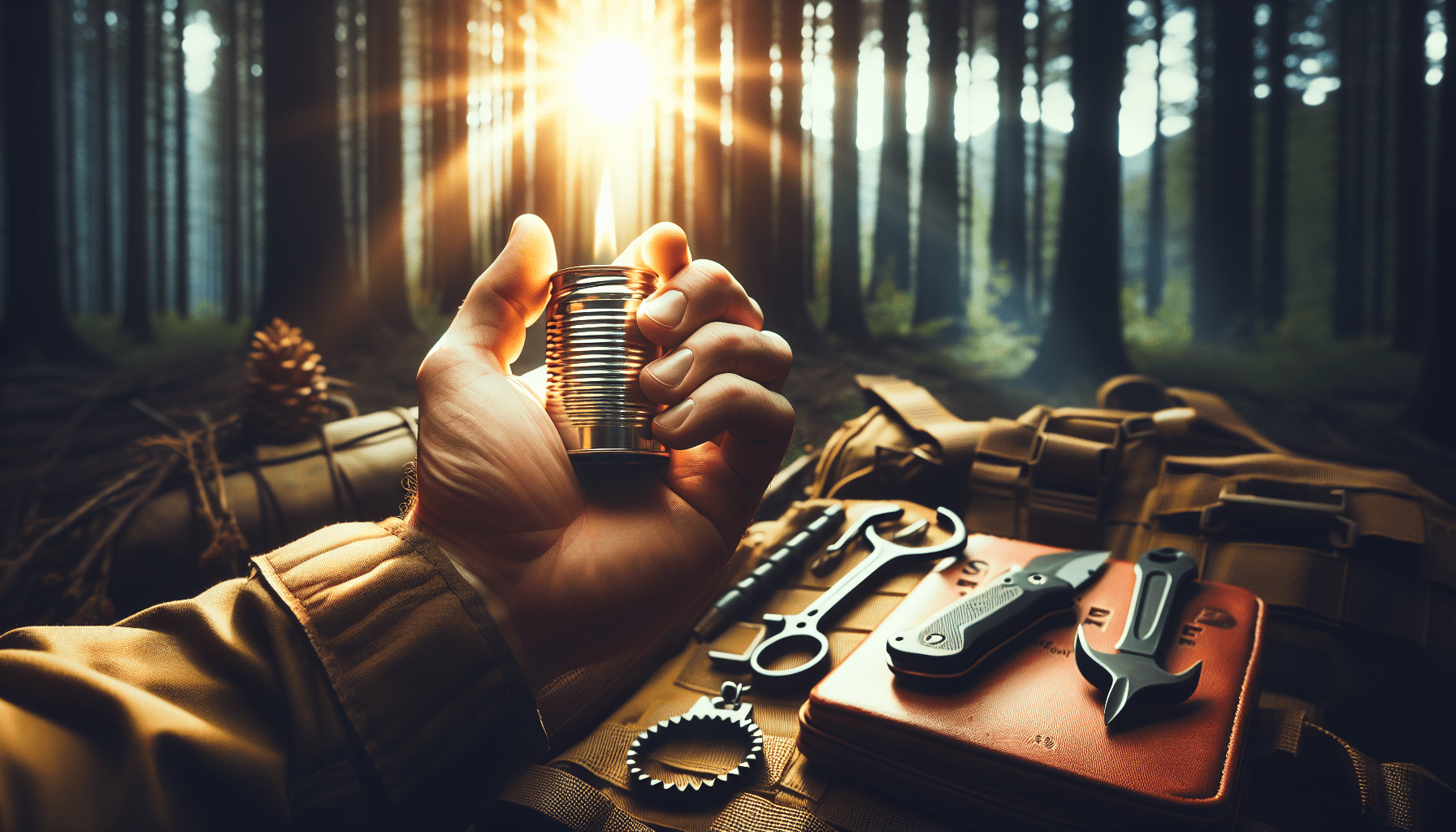Imagine a world where you are prepared for any crisis that comes your way. Whether it’s a natural disaster, economic collapse, or societal breakdown, you possess the ultimate toolkit of prepper skills to not only survive but thrive. In this comprehensive guide, you will discover a wide range of essential skills that will empower you to navigate through any challenging situation with confidence. From food preservation techniques to self-defense strategies, this article is your go-to resource for becoming an unstoppable prepper. So, buckle up and get ready to embark on a journey towards self-reliance and preparedness like never before.

Survival Skills
Building a shelter
Building a shelter is a crucial skill to have in any survival situation. Your shelter will protect you from the elements, keep you safe, and provide a sense of comfort and security. When building a shelter, it’s important to consider your surroundings and available resources. If you’re in a forested area, you can utilize fallen branches and leaves to create a makeshift lean-to or debris hut. In open areas, you can use a tarp or poncho to construct a simple shelter using trees or poles as support. Remember to keep the shelter elevated off the ground to avoid moisture and potential critters.
Starting a fire
Fire is an essential element for survival. It provides warmth, light, and the ability to cook food. To start a fire, you need three key components: fuel, oxygen, and heat. Collect dry tinder, such as small twigs, leaves, or wood shavings, to serve as the initial fuel. Arrange the tinder in a small pile or bird’s nest shape. Use a firestarter, such as a lighter, matches, or a ferro rod, to provide the heat needed to ignite the tinder. Blow gently on the flame to supply oxygen and gradually add larger sticks and logs as the fire grows.
Finding and purifying water
Water is crucial for your survival, and knowing how to find and purify water sources is essential. Look for natural water sources such as streams, rivers, or lakes, but avoid stagnant or contaminated water. If you can’t find a water source, you can collect rainwater using a tarp or waterproof container. To purify water, you can boil it for at least five minutes, use water purification tablets or filters, or utilize natural methods like solar disinfection. It’s important to ensure your water is free from harmful bacteria, viruses, and parasites before consuming.
Navigating without GPS
In a survival situation, you may not have access to GPS or other electronic navigation devices. Learning how to navigate with natural landmarks is a valuable skill. One of the simplest methods is using the sun and shadows. In the northern hemisphere, the sun rises in the east and sets in the west. By observing the sun’s position and the direction of shadows, you can determine east, west, and approximate time. The North Star, also known as Polaris, can help you find true north at night. Familiarize yourself with local topography and natural landmarks like mountains, rivers, or distinctive tree formations to navigate your way.
Identifying edible plants
Knowing which plants are safe to eat in the wild is vital for survival. Take the time to study and identify edible plants in your area before an emergency arises. Look for plants with recognizable characteristics like berries, nuts, or leaves that resemble common edible species. Beware of plants with toxic look-alikes and be cautious if you’re unsure. It’s recommended to invest in a field guide or take a survival course that focuses on plant identification to enhance your knowledge and avoid potentially harmful mistakes.
Hunting and fishing
When food supplies are scarce in a survival situation, hunting and fishing skills can help sustain you. Learning how to construct simple traps and snares, as well as how to use basic hunting tools like a slingshot or bow and arrow, can greatly improve your chances of procuring food. Familiarize yourself with local wildlife and their habits to increase your chances of a successful catch. Fishing is another valuable skill. Learn how to construct a basic fishing rod, tie various fishing knots, and identify suitable bait and fishing spots. These skills can provide you with a sustainable source of food.
Basic first aid
Having basic first aid knowledge can make a significant difference in a survival situation. Learn how to assess and stabilize injuries, clean and dress wounds, and manage illnesses. Understanding the signs and symptoms of common ailments like dehydration, hypothermia, and food poisoning can help you take appropriate action. Additionally, knowing how to perform CPR and rescue breathing can be life-saving. Consider taking a first aid and CPR course to gain hands-on experience and build confidence in providing medical assistance when needed.
Self-defense techniques
In any survival situation, being able to protect yourself is paramount. Learning basic self-defense techniques can help you defend against potential threats and increase your chances of survival. Techniques like striking vital areas, escaping from holds, and using improvised weapons can give you an advantage in dangerous situations. Consider taking self-defense classes or training in martial arts like Krav Maga, Karate, or Taekwondo. Remember, self-defense is about avoiding conflict whenever possible and using force as a last resort to protect yourself and others.
Emergency signaling
In dire situations, emergency signaling can help rescuers locate you. Knowing different signaling methods can greatly increase your chances of being found. Create a signaling plan that includes visual signals such as smoke from a fire, mirrors or shiny objects to reflect sunlight, and brightly colored or improvised flags. Auditory signals like yelling, whistling, or creating loud noises with a whistle or horn can also attract attention. Additionally, learning Morse code can provide a standardized means of communication that can be understood internationally. Practice your signaling skills in advance to ensure you’re proficient when it matters most.
Food Storage and Preservation
Stockpiling non-perishable food
Having a well-stocked pantry of non-perishable food is essential for preparedness. Stockpile items like canned goods, dried foods, grains, beans, and other foods with a long shelf life. Ensure you have a variety of nutritious options that cater to your dietary needs. Consider the number of people in your household and plan for at least a two-week supply. Keep track of expiration dates and regularly rotate your stockpile, consuming and replacing items to maintain freshness.
Canning and preserving food
Canning and preserving food allows you to extend the shelf life of perishable items. Invest in canning equipment, including jars, lids, and a pressure cooker or water bath canner. Familiarize yourself with proper canning techniques, such as sterilizing jars, using the correct processing times and temperatures, and ensuring a proper seal. Preserve fruits, vegetables, and even meats by canning them in jars with added brine, syrup, or sauce. Follow tested and trusted recipes to ensure the safety and quality of your canned goods.
Dehydrating food
Food dehydration is a simple and effective method of preserving fruits, vegetables, and meats. Dehydrated foods have a longer shelf life and can be easily rehydrated when needed. Invest in a food dehydrator or learn how to dehydrate food using an oven or even sunlight. Slice foods into uniform pieces and arrange them on the dehydrator trays or baking sheets. Set the temperature low and allow the food to dry completely, removing moisture. Once dehydrated, store the food in airtight containers in a cool, dry place for optimal preservation.
Building a root cellar
A root cellar is a traditional method of storing fruits, vegetables, and other perishable foods in a cool and controlled environment. To build a root cellar, find a suitable location, preferably below ground, to take advantage of the Earth’s natural insulation. Dig a hole or create an underground chamber and insulate the walls and ceiling with materials like wood, straw, or hay bales. Ensure proper ventilation to prevent spoilage and monitor humidity levels to maintain optimal storage conditions. A well-built root cellar can provide ideal conditions for long-term food storage.
Creating a sustainable garden
Growing your own food is a sustainable and rewarding practice. Start by selecting an appropriate location for your garden, considering factors like sunlight, water accessibility, and soil quality. Prepare the soil by removing weeds and debris, then amend it with organic matter like compost or manure to improve fertility. Choose crops that thrive in your climate and match your dietary preferences. Regularly water, weed, and monitor your garden for pests or diseases. Harvest your crops when they are ripe, preserving excess produce through canning, freezing, or dehydrating.
Raising livestock
For a self-sufficient lifestyle, consider raising livestock for food. Chickens are a popular choice due to their low maintenance and ability to provide eggs and meat. Ensure you have a suitable coop or enclosure with proper space, ventilation, and protection from predators. Learn how to care for chickens, feed them a balanced diet, and collect and store their eggs. If you have more space and experience, goats, rabbits, or even larger livestock like cows can provide additional sustenance. However, raising livestock requires dedication and knowledge, so consider gaining experience through research or hands-on training.

Water Collection and Purification
Rainwater harvesting
Rainwater harvesting is a sustainable method of collecting and utilizing water. Set up a rainwater collection system by placing barrels or containers beneath your downspouts or gutters to capture rainwater runoff from your roof. Install screens to filter out debris and prevent mosquito breeding. The harvested rainwater can be used for gardening, washing, or even drinking after proper filtration and purification.
Digging a well
In situations where a natural water source is not readily available, digging a well can provide access to groundwater. However, digging a well is a labor-intensive task that requires careful planning and consideration. Before digging, research the depth of the water table in your area and ensure you have the necessary permits and knowledge of local regulations. Use appropriate digging tools and follow safety practices. Once the well is dug, install a well pump or hand-operated mechanism for water extraction.
Building a water filtration system
Water filtration is crucial for removing contaminants and making water safe for consumption. Building a DIY water filtration system can be a life-saving skill. Start with a container, such as a large plastic bucket or barrel, and drill holes at the bottom. Layer the container with various filtering materials like gravel, sand, activated carbon, and cloth to remove larger debris, sediment, chemicals, and microorganisms. Collect the filtered water in another container, ensuring you also have a way to further purify it if necessary.
Purifying water using solar disinfection
Solar disinfection, also known as SODIS, is a simple and effective method of purifying water using the sun’s UV rays. Fill clear PET plastic bottles with water, leaving a small air gap, and place them in direct sunlight for six hours on a sunny day or two consecutive days if cloudy. The UV rays will kill harmful bacteria, viruses, and parasites present in the water, making it safe to drink. This method is most effective when used with clear bottles and in areas with ample sunlight.
Distilling water
Distillation is a reliable method of purifying water by separating contaminants through heating and condensation. To distill water, boil it in a pot or container with a tight-fitting lid. As the water vapor rises, it leaves behind impurities. Collect the steam using a tube or a lid with a downward slope, directing it to another container where it condenses back into liquid form. The resulting water is free from bacteria, viruses, heavy metals, and other pollutants. Distillation can be utilized in emergency situations or when other purification methods are not available.
Emergency Communications
Using a two-way radio
A two-way radio is a valuable communication device in emergency situations, especially when cell phone networks are down or unreliable. Learn how to operate a two-way radio, including tuning to the correct channel, adjusting volume and squelch settings, and understanding radio etiquette. Familiarize yourself with common emergency frequencies and protocols. Practice using the radio with family or friends to improve your proficiency and ensure effective communication during critical times.
Learning Morse code
Morse code is a method of sending messages using dots and dashes, allowing for concise and efficient communication. Learning Morse code can be incredibly useful in emergency situations, especially when long-range communication is necessary. Study and practice Morse code using resources like flashcards, mobile apps, or online tutorials. Master the basics and build your knowledge to be able to understand and transmit messages using light, sound, or even by tapping on surfaces.
Building a makeshift antenna
In some situations, you may need to extend the range of your communication equipment. Building a makeshift antenna can help boost the signal and improve your communication capabilities. Look for materials such as wire, copper, or aluminum that can serve as conductors. Follow basic antenna design principles, such as creating a dipole or Yagi antenna, to increase the efficiency and range of your signal transmission. Experiment with different configurations and positions to optimize your makeshift antenna’s performance.
Signaling with smoke and mirrors
When traditional communication methods are not available, signaling with smoke and mirrors can attract attention and communicate a distress signal. Create smoke signals by starting a fire and placing green vegetation, like leaves or grass, on the flames to produce thick smoke. Use mirrors or reflective surfaces to flash sunlight in a specific pattern, such as SOS, to create visual signals that can be seen from a distance. Practice these techniques in advance to ensure you can effectively signal for help when needed.
Creating a long-range communication plan
In emergency situations, a well-thought-out communication plan is crucial for maintaining contact with loved ones and coordinating help. Create a long-range communication plan that includes designated meeting points, contact information for emergency services or local authorities, and a system for checking in with family or friends. Establish alternative communication methods like designated radio frequencies, code words, or even physical message drop points. Regularly practice and update your plan to account for changing circumstances or new technologies.

Basic Carpentry and Repair Skills
Building and repairing structures
Basic carpentry skills enable you to construct and repair structures that provide shelter, storage, and security. Learn how to measure and cut lumber, assemble basic frameworks, and secure joints with nails, screws, or other fasteners. Understand the building codes and regulations specific to your area to ensure your structures are safe and compliant. Practice building small structures like shelves, tables, or garden sheds to hone your skills and gain confidence in your carpentry abilities.
Using common tools
Familiarity with common tools is essential for any repair or construction project. Learn how to safely and effectively use hand tools like hammers, screwdrivers, saws, and wrenches. Invest in quality tools and keep them organized and well-maintained. Understand the purpose and function of each tool and practice using them on various materials and projects. Being comfortable with tools allows you to tackle repairs, build improvised solutions, and maintain essential equipment or systems.
Basic plumbing skills
Understanding basic plumbing principles can help you address minor plumbing issues and ensure the availability of water in a survival scenario. Learn how to fix leaking pipes, replace faucet washers, and clear clogged drains. Familiarize yourself with shut-off valves and how to turn off the main water supply in case of emergencies. Invest in a basic plumbing toolkit that includes pipe wrenches, adjustable wrenches, pliers, and Teflon tape. Having these skills and tools can save you money and prevent further damage when plumbing problems arise.
Electrical repairs
Being able to perform basic electrical repairs can be invaluable, especially when dealing with power outages or issues in a survival situation. Start by learning how to safely turn off the main circuit breaker or specific breakers for your home. Understand the basics of wiring, including replacing outlets, switches, or light fixtures. Invest in a multimeter to test electrical circuits and troubleshoot common electrical problems. Remember, electrical work can be dangerous, so know your limits and seek professional help for complex or potentially hazardous electrical tasks.
Vehicle maintenance
In a survival situation, your vehicle can become a vital asset. Knowing basic vehicle maintenance and repair skills can keep your vehicle functioning properly and enable you to travel to safety if needed. Learn how to change a tire, check and top up fluids, replace a battery, and troubleshoot common issues. Understand the operation of your vehicle’s components, including the engine, brakes, and transmission. Keep a basic toolkit and emergency supplies in your vehicle, including jumper cables, a spare tire, and a first aid kit, to handle unexpected situations.
Wilderness Survival
Foraging for food
Foraging for food in the wilderness can provide sustenance when other resources are scarce. Learn how to identify wild edible plants, mushrooms, and berries in your area. Understand the seasons and habitats in which these plants thrive. Research and practice proper foraging techniques to avoid poisonous or toxic species. Remember, foraging should be done responsibly and sustainably, taking into account conservation principles and laws governing the collection of wild foods.
Building traps and snares
Building traps and snares is a valuable skill for procuring food in a survival situation. Learn how to construct simple traps using natural materials like sticks, rocks, and vines. Research and practice different types of traps, such as deadfalls, snares, and fish traps, to increase your chances of catching game. Understand the behavior and habits of local wildlife to strategically place and bait your traps. Regularly check your traps to ensure humane treatment of animals and increase your chances of a successful catch.
Finding and purifying water sources
Water is essential for survival, and knowing how to find and purify water sources in the wilderness is crucial. Learn how to locate streams, rivers, or lakes using topographic maps, compasses, or natural signs like vegetation or animal tracks. Understand the potential hazards of natural water sources, including parasites, bacteria, or chemical pollutants. Utilize purification methods like boiling, chemical tablets, or filtration devices to make water safe for consumption. Always prioritize water safety to avoid dehydration or waterborne illnesses.
Navigating using natural landmarks
Navigating in the wilderness without GPS requires an understanding of natural landmarks and navigation techniques. Familiarize yourself with topographic maps and learn how to read them. Identify prominent landmarks like mountains, rivers, or distinctive rock formations that can serve as reference points. Utilize basic orienteering skills, including compass navigation and triangulation, to determine your direction and location. Regularly practice these skills by going on hikes or wilderness outings to build confidence in your abilities.
Creating improvised tools and weapons
Being resourceful and knowing how to create improvised tools and weapons from natural materials can significantly enhance your wilderness survival skills. Learn how to make cutting tools, such as primitive knives or spearheads, using rocks or bones. Familiarize yourself with cordage-making techniques using plant fibers or animal sinew. Practice creating fishhooks, traps, and fishing spears to increase your chances of securing sustenance. Improvised tools and weapons can also be used for shelter construction, self-defense, and various survival tasks.

Self-Sustainability
Growing food in limited spaces
Even with limited space, you can grow your own food. Explore container gardening using pots, hanging baskets, or vertical gardening systems to maximize space efficiency. Select compact and dwarf varieties of plants that require less space, such as cherry tomatoes, lettuce, or herbs. Utilize not only ground space but also vertical surfaces like walls or fences. Invest in lightweight soilless growing mediums and nutrient-rich organic fertilizers to help plants thrive in limited spaces.
Composting waste
Composting is a sustainable practice that reduces waste, enriches soil, and supports plant growth. Learn how to compost organic materials like fruit and vegetable scraps, coffee grounds, and yard trimmings. Build or purchase a compost bin or heap, ensuring proper aeration and moisture. Understand the balance of carbon-rich “browns” like dried leaves or wood chips and nitrogen-rich “greens” like grass clippings or food scraps. Regularly turn the compost to promote decomposition and avoid odors. The resulting nutrient-rich compost can be used to fertilize gardens or potted plants.
Raising backyard chickens
Raising backyard chickens can provide a sustainable source of fresh eggs, meat, and even pest control. Research local regulations and choose appropriate chicken breeds based on your available space, climate, and personal needs. Build or purchase a secure chicken coop or enclosure that protects the chickens from predators and provides comfort. Learn how to properly feed and care for the chickens, ensuring they have access to fresh water, suitable bedding, and a balanced diet. Regularly collect and clean eggs, and be prepared to handle common health issues that may arise.
Harvesting rainwater
Harvesting rainwater is a sustainable method of collecting and utilizing water for various purposes. Install rain barrels or cisterns to capture rainwater runoff from roofs or other structures. Properly position the barrels to maximize water collection efficiency and consider using screens to filter out debris. Use the harvested rainwater for tasks like watering plants, cleaning, or even flushing toilets. Rainwater harvesting reduces reliance on municipal water sources and helps conserve water during dry periods.
Generating renewable energy
Self-sustainability involves reducing dependence on traditional energy sources by harnessing renewable energy. Explore options like solar panels, wind turbines, or hydroelectric systems to generate your own electricity. Conduct a feasibility study to determine the most suitable renewable energy source based on your location, available resources, and energy needs. Install and maintain the chosen system in compliance with local regulations and safety guidelines. Generating renewable energy not only reduces your carbon footprint but also provides energy security and self-reliance.
Medical Skills and First Aid
Basic wound cleaning and dressing
Knowing how to clean and dress wounds is essential for preventing infection and promoting proper healing. Start by washing your hands thoroughly with soap and water or using hand sanitizer. Clean the wound with sterile saline solution or clean water and gentle soap. Gently pat the wound dry with a clean cloth or sterile gauze. Apply an appropriate dressing, such as sterile adhesive bandages, gauze pads, or non-stick dressings. Regularly monitor the wound for signs of infection, such as redness, swelling, or pus, and seek professional medical help if necessary.
CPR and rescue breathing
Cardiopulmonary resuscitation (CPR) and rescue breathing are life-saving techniques used to revive someone experiencing cardiac arrest or respiratory distress. Learn the correct method of performing CPR, including chest compressions and rescue breaths. Familiarize yourself with the appropriate compression-to-breath ratio and the proper hand placement for performing compressions. Regularly update your skills through training courses or refresher programs, as guidelines and techniques may evolve over time. Being able to perform CPR and rescue breathing can significantly increase the chances of survival in critical situations.
Treating fractures and sprains
In a survival or emergency situation, the ability to stabilize fractures and sprains is crucial for providing immediate care. Learn how to splint and immobilize injured limbs to reduce pain, prevent further damage, and promote healing. Utilize available materials like sticks, branches, or strips of fabric to create a makeshift splint. Apply gentle and even pressure to secure the splint, ensuring it immobilizes the injured area without cutting off circulation. Seek professional medical help as soon as possible, especially for severe fractures or suspected broken bones.
Recognizing and managing common ailments
Being able to recognize and manage common ailments allows you to provide care in situations where professional medical help is not immediately available. Educate yourself about signs and symptoms of illnesses like food poisoning, dehydration, heatstroke, or respiratory infections. Take preventative measures to reduce the risk, such as practicing proper hygiene, staying hydrated, and maintaining a clean living environment. Understand when to take action, when to self-treat, and when to seek professional medical assistance.
Administering medication
Having basic knowledge of administering medication is valuable in emergencies or situations where access to healthcare professionals may be limited. Understand the correct dosage, route, and timing of medication administration. Learn how to correctly use common medical instruments, such as syringes or epinephrine auto-injectors. Be familiar with basic over-the-counter medications that can provide relief for common symptoms. Remember, it is essential to follow dosage guidelines and seek professional medical advice whenever possible.

Self-Defense and Martial Arts
Learning basic self-defense moves
Learning basic self-defense moves empowers you to protect yourself and others in dangerous situations. Focus on techniques that are easy to learn and execute effectively. Practice strikes, kicks, and blocks that target vulnerable areas of the body, such as the eyes, nose, throat, or groin. Memorize simple escape techniques like wrist grabs or chokeholds. Regularly practice self-defense drills and scenarios to build muscle memory and increase your confidence in handling confrontations.
Krav Maga techniques
Krav Maga is a practical and effective self-defense system that emphasizes real-world situations and quick, decisive action. Enroll in a Krav Maga class or find instructional resources to learn basic techniques like strikes, kicks, and defenses against common attacks. Develop your reflexes, balance, and situational awareness through regular training. Krav Maga techniques are designed to be instinctive and efficient, making them a valuable addition to your self-defense skillset.
Karate and taekwondo basics
Karate and taekwondo are martial arts that focus on striking techniques and disciplined training. Enroll in a karate or taekwondo class to learn the basics of punches, kicks, and blocks. Develop strength, flexibility, and mental discipline through regular practice. Karate and taekwondo promote self-discipline, control, and respect for others, which can be beneficial in both self-defense situations and everyday life.
Weapons training
Being knowledgeable about self-defense weapons can provide an extra layer of protection in certain situations. Learn how to handle and safely use common self-defense weapons like pepper spray, stun guns, or batons. Understand local regulations regarding the possession and use of these weapons. Practice drills and scenarios to develop proficiency in deploying and effectively utilizing self-defense tools. Remember, weapons should only be used as a last resort in situations where your life or the lives of others are at immediate risk.
Building situational awareness
Situational awareness is the ability to assess and understand your surroundings to identify potential threats or dangers. Stay alert and observe your environment, paying attention to people, objects, and unusual behavior. Understand common indicators of suspicious activity and possible danger. Trust your instincts and be prepared to react decisively if you sense a potential threat. Regularly practice scanning your environment, identifying potential exits, and mentally rehearsing how you would respond in different scenarios.
Psychological Preparedness
Developing mental resilience
Building mental resilience is essential for withstanding and overcoming challenges in emergency situations. Cultivate a positive mindset, focusing on adaptability, problem-solving, and maintaining a sense of purpose. Develop coping mechanisms for stress, anxiety, and fear, such as deep breathing exercises, meditation, or journaling. Build emotional well-being by nurturing relationships, practicing self-care, and seeking support from loved ones. Regularly engage in activities that promote mental and emotional strength, like physical exercise, hobbies, or learning new skills.
Managing stress and anxiety
In high-stress situations, learning how to manage stress and anxiety is crucial for maintaining clear thinking and decision-making abilities. Develop effective stress management techniques, such as deep breathing exercises, progressive muscle relaxation, or mindfulness meditation. Practice these techniques regularly to build resilience and become more adept at managing stress. Identify and eliminate unnecessary sources of stress, prioritize self-care, and seek professional help or support when necessary.
Building a positive mindset
Maintaining a positive mindset in challenging situations can greatly impact your overall well-being and ability to overcome adversity. Focus on what you can control rather than dwelling on things outside of your influence. Practice gratitude and daily affirmations to foster optimism and resilience. Surround yourself with positive and supportive people who uplift and inspire you. Regularly engage in activities that bring joy and fulfillment to counterbalance negative emotions and maintain a positive outlook.
Practicing meditation and mindfulness
Meditation and mindfulness practices can help calm your mind, reduce stress, and promote mental clarity. Find a comfortable and quiet space where you can dedicate time to meditate or practice mindfulness. Focus on your breath, allowing thoughts to come and go without judgment. Explore various meditation techniques like guided meditation, mantra repetition, or body scans to find what works best for you. Regularly incorporating these practices into your routine can help improve focus, reduce anxiety, and enhance overall well-being.
Handling conflicts and making tough decisions
In survival situations, conflicts and tough decisions are inevitable. Develop effective conflict resolution skills to de-escalate tense situations and find mutually beneficial resolutions. Practice active listening, empathy, and open communication. When facing tough decisions, gather all relevant information, consider potential outcomes, and weigh the pros and cons. Trust your instincts, but also seek advice from others when appropriate. Make decisions based on rational thinking, your values, and the best interests of all involved parties. Regularly reflect on past experiences to learn from your decisions and continue to grow as a problem solver.
